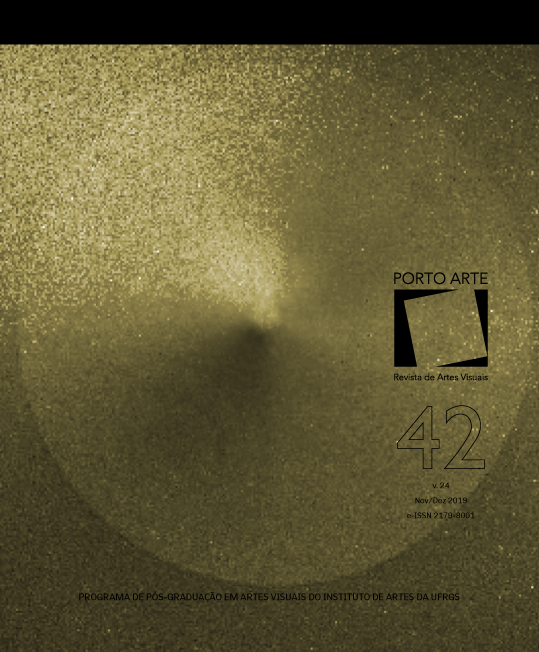The Specter Of The Blackamoor: Figuring Africa And The Orient
DOI:
https://doi.org/10.22456/2179-8001.98261Palavras-chave:
Eurocentrism. Racialization. Orientalism. Exotica.Mimesis. SyncretismResumo
To speak of the Blackamoor figure is to speak of several intertwined imaginaries, especially along the East/West and North/South double geographical axis. A hybrid of the African Black and the Muslim Moor, the Blackamoor figure condenses representations often conceptualized in isolation within the compartmentalized cartographies of the various Area Studies. Scrutiny of the Blackamoor, in this sense, helps shed light on forgotten discursive continuities as well as on historical connectivities across continents and oceans; in this case, those operating along the winding Mediterranean shores of Europe, Africa, and Asia. Manufactured in European workshops, the Blackamoor can on one level be analyzed as part of an ornamental art that reflects various aesthetic tendencies while also reflecting the taste of its producers and consumers. On another level, the Blackamoor can be examined critically, as a stereotypical imaging of the racialized and gendered Black body. Here, however, I will pose a different set of questions: Can the putatively reassuring and domesticated Blackamoor also be viewed as a visual manifestation of an ongoing European anxiety about its “others?” Might this image of Blackamoor docility testify indirectly to a doubly repressed fear toward the neighboring continents of Africa and Asia? Could the apparent civility of the ornamental Blackamoor mask anxieties about racial mixing, cultural syncretism, and intellectual influence?
Downloads
Referências
Sem referências. Revisar o texto e verificar esta informação.
Ficheiros Adicionais
Publicado
Como Citar
Edição
Secção
Licença
Autores que publicam nesta revista concordam com os seguintes termos:
Autores mantêm os direitos autorais e concedem à revista o direito de primeira publicação, com o trabalho licenciado sob a Creative Commons Atribuição-NãoComercial-CompartilhaIgual 4.0 Internacional (CC BY-NC-SA 4.0).
Autores têm autorização para assumir contratos adicionais separadamente, para distribuição não exclusiva da versão do trabalho publicada nesta revista, como publicar em repositório institucional, com reconhecimento de autoria e publicação inicial nesta revista, quando for o caso.
Os artigos são de acesso aberto e uso gratuito, com atribuições próprias em atividades educacionais, de pesquisa e não comerciais.


